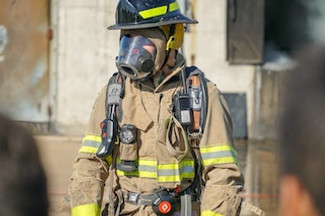Aug 11th 2023
What is a Powered Air-Purifying Respirator
A powered air purifying respirator (PAPR) is a breathing system that uses a powered fan to render filtered air into a variety of sealed headgear and facepiece to provide a safe ppe equipment to the user in hazardous environments. The PAPR respirator is widely used in a variety of setting from industrial to medical. There are different models of air respirators and today we are going to focus on the areas of use of the Honeywell North PR500 Series respirator.

Agriculture Applications:
List of the different agriculture applications for the North PR500 Series PAPR respirator.
Some agriculture applications for the North PR500 Series PAPR respirator include:
-Protecting against pesticides
-Protecting against herbicides
-Protecting against dust
-Protecting against mold
-Protecting against bacteria
List of the different construction applications for the North PR500 Series PAPR respirator.
The North PR500 Series PAPR respirator can be used for construction applications such as:
- Dusty work environments
- Painting
- Sanding
- Grinding
- Welding
List of the different government-related applications for the North PR500 Series PAPR respirator.
Why would governments use a North PR500 Series PAPR respirator?
There are many reasons why governments would use a North PR500 Series PAPR respirator. Some of these reasons include:
1. To protect workers from hazardous airborne particles
2. To ensure worker safety in hazardous environments
3. To provide respiratory protection for workers in hazardous industries
4. To reduce the exposure of workers to harmful airborne contaminants
List of the different manufacturing applications for the North PR500 Series PAPR respirator.
The North PR500 Series PAPR respirator can be used for a variety of manufacturing applications, including:
-Assembling and disassembling products
-Cleaning and maintaining equipment
-Operating machinery
-Working with hazardous materials
Why would manufacturing companies use a North PR500 Series PAPR respirator?
A North PR500 Series PAPR respirator would be used in a manufacturing setting to protect workers from inhaling harmful particles in the air. The PAPR system filters out contaminants and provides clean air for the user to breathe. This respirator is comfortable to wear and easy to use, making it ideal for workers who are exposed to hazardous materials daily. This respirator is recommended for use in environments where there is a high concentration of airborne particles, such as in a factory or foundry.
List of the different pharmaceutical applications for the North PR500 Series PAPR respirator.
The North PR500 Series PAPR respirator can be used for a variety of pharmaceutical applications, including:
- Mixing and compounding of hazardous drugs
- Packing and labeling of pharmaceutical products
- Quality control testing of pharmaceuticals
- Manufacturing of pharmaceuticals
Why would pharmaceutical companies use a North PR500 Series PAPR respirator?
There are several reasons why pharmaceutical companies would use a North PR500 Series PAPR respirator. Some of these reasons include:
1. To protect workers from harmful airborne particles.
2. To provide workers with clean, fresh air to breathe.
3. To help reduce the spread of airborne diseases.
4. To increase worker productivity by providing them with clean air to breathe.
5. To reduce the amount of time needed for breaks and rest periods.
List of the different transportation applications for the North PR500 Series PAPR respirator.
The North PR500 Series PAPR respirator can be used for a variety of applications, including:
-Welding
-Painting
-Sanding
-Grinding
-Hazardous materials handling
-Pesticide application
-Pharmaceutical manufacturing
-Food processing
Why would transportation companies in particular use a North PR500 Series PAPR respirator?
There are many reasons why a company might choose to use a North PR500 Series PAPR respirator. Some of the reasons include:
1. To protect employees from exposure to hazardous materials
2. To reduce the spread of infectious diseases
3. To reduce the amount of time needed for employee training
4. To improve employee productivity
5. To reduce the number of missed work days due to illness

